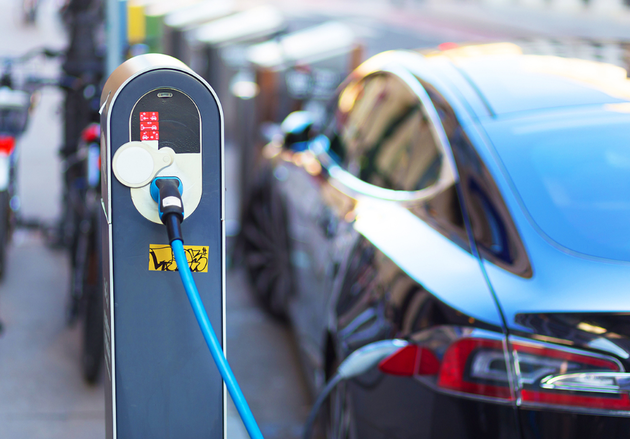Apr. 8 (NBD) -- China's 2018 subsidy program for new energy vehicles (NEVs) prioritizes pure electric vehicles with higher driving range and energy density, which has pushed automakers to upgrade their products.
The new NEV subsidy scheme, launched in February this year by the Ministry of Industry and Information Technology and three other national ministries and commissions, stipulated that electric vehicles with a driving range below 150 kilometers on a charge or battery power/weight ratio below 105Wh/kg will not receive subsidies.
Yan Jinghui, an analyst in the automobile industry, told NBD that the new subsidy scheme is aimed to press carmakers to better electric vehicle performance. Yan also noted that the cost for such upgrading is likely to be partly shared by manufacturers and consumers and partly offset by subsidies, and the influence of the new subsidy scheme on the auto market has started to show.
New scheme to push technology and product upgrade
NBD learned that in Beijing, models with a range of 350 kilometers and beyond on a single charge can be found everywhere this year and there are few vehicles with a driving range below 200 kilometers.
A salesperson at a 4S store of JAC Motors said to NBD that the store this year sells primarily the iEV7S models with a driving range of 280 kilometers and as for the iEV7E models with a 170-kilometer driving range which are currently available, it's unclear whether the store will continue to sell or not when the new subsidy policy takes effect in June.
Automobile enterprises take a positive attitude towards the new NEV subsidy scheme. Yin Tongyue, chairman of Chery Automobile Co., once said to NBD since subsidy reduction is unavoidable, companies can offset the influence of the policy change by lowering manufacturing costs and selling credits under the "dual-credit scheme".
A commercial vehicle industry source echoed the idea, saying that technological upgrade has already been included in the development plan of commercial vehicle manufacturers with a plan to develop NEVs, therefore the new subsidy scheme will have little influence on them, but it will deliver a heavy blow to those with poorer technical capacity.
According to the new NEV subsidy scheme, the minimum subsidy benchmark of range on a single charge is elevated to 150 kilometers from 100 kilometers and subsidies for EVs with more than 400-kilometer range are increased.
Yan believed that such adjustment, on the one hand, cuts down subsidies for low-range models and on the other hand, builds a closer connection between the driving range and the subsidy amount so as to encourage automakers to produce longer-range vehicles.

Photo/VCG
Policy continuity, key to ensure sustainable growth
Although the subsidy reduction has little influence on the NEV industry as a whole, yet the policy adjustment affects the product portfolio of some automakers.
The NEV subsidy policy was first established in 2015 as part of China's 13th Five-Year Plan, and to date, three adjustment have been made to the scheme. Accordingly, carmakers changed their product layout.
For example, CHJ Automotive recently announced that the company has terminated its production of SEV models with a driving range of 100 km and a new all-electric model is under research and development.
The Chinese electric vehicle startup's founder Li Xiang once admitted the discontinuation of the SEV project was a result of its misjudgement about China's regulation on low-speed vehicles, which the company thought would be released in 2016 but hasn't yet been put in place.
The person in charge of another electric carmaker said to NBD that due to the uplifted subsidy benchmark, the company changed its R&D schedule, accelerating the launch of models with longer range to replace low-range products.
In fact, the continuity of NEV-related policy has always been the concern of the industry. Miao Wei, Minister of Industry and Information Technology, commented at the forum ChinaEV100 that the subsidy reduction must be enforced and it's better to adjust the subsidy scheme at several stages rather than one-time adjustment at the end of 2020.
Ye Shengji, secretary-general of the China Association of Automobile Manufacturers, said to NBD that the policy continuity is the key to ensure the sustainable growth of the NEV market. Ye noted that the new subsidy scheme this year was launched in accordance with the overall sliding-scale subsidy plan and shares the same direction with prior schemes. In general, the continuity and stability of the NEV policy has been kept, Ye added.
Email: gaohan@nbd.com.cn


 川公网安备 51019002001991号
川公网安备 51019002001991号





